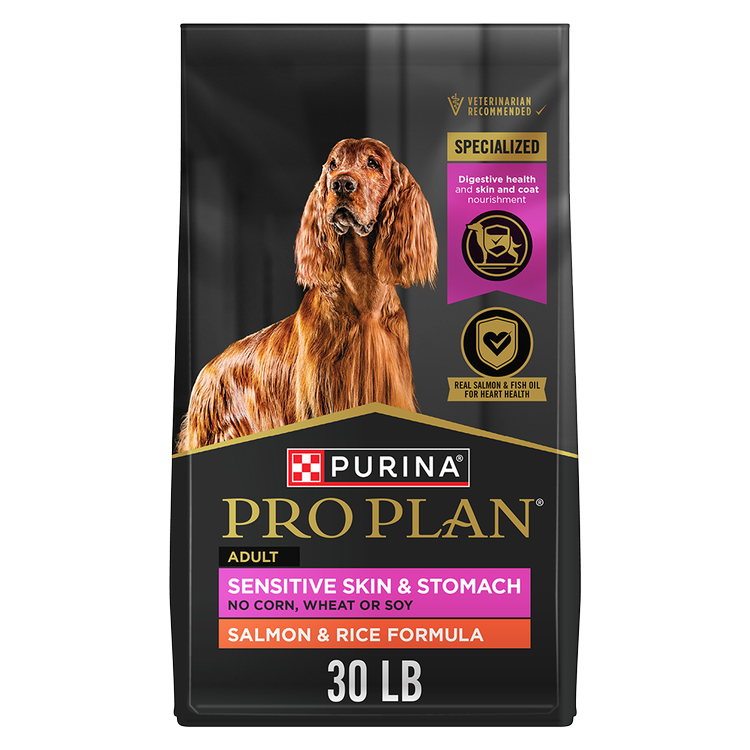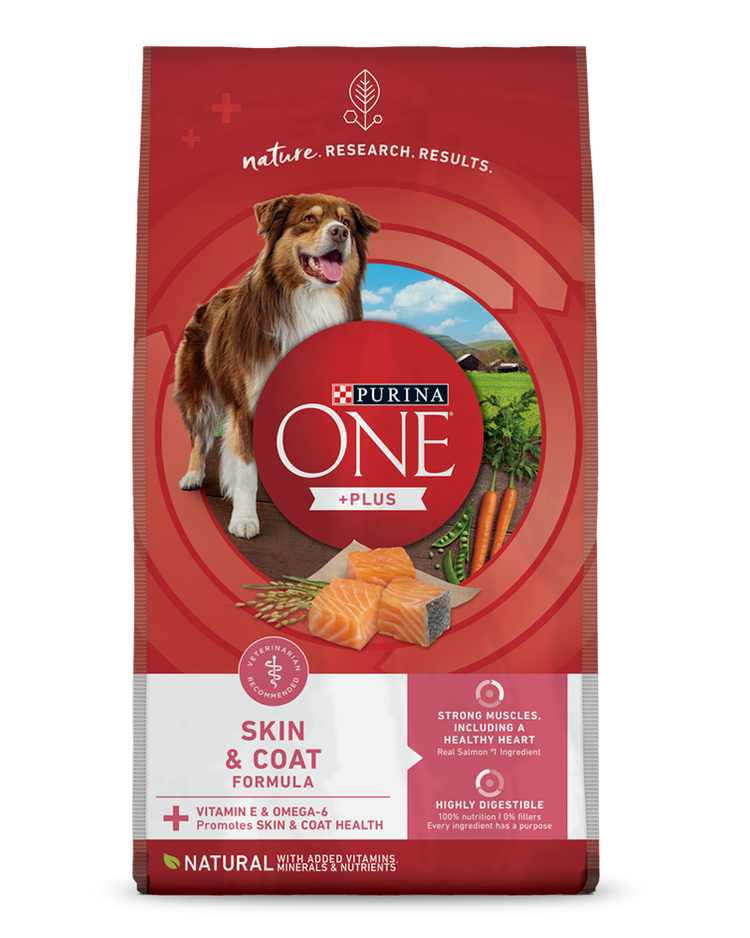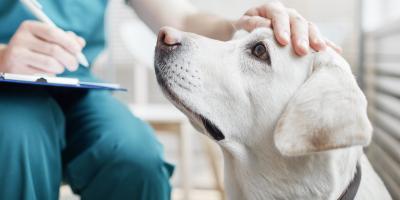Pimple-Like Bump on Your Dog? Dog Acne Symptoms & Treatment


If you’ve noticed a pimple-like bump on your dog, this could be a sign of acne. That’s right, just like humans (and cats), dogs can develop pimples during puberty.
Unlike human teenagers, though, dogs seem to be blissfully unaware of how blemishes affect their appearance. They may not notice them at all unless they become painful.
While dog zits will clear up on their own in many cases, it’s a good idea to keep an eye on them. If you’re concerned or your pet seems to be bothered by their presence, there are dog acne treatment options available.
Here’s what you should know about the causes of dog acne and what you can do to support your pet if they develop it.
Can Dogs Get Acne or Pimples?
Yes. Whether it appears as a pimple-like bump, whitehead or blackhead, dogs can get acne. It’s one of several different types of skin conditions common to canines.
Typically, dog pimples start to develop in puberty, which occurs between five to eight months of age. In many cases, it will disappear on its own by the time they reach adulthood, or at about one year.
The area affected most often is the face, specifically the lips, chin and muzzle. Dogs may develop a few small bumps or more serious lesions.
If the blemishes look intense or they disrupt your pet’s daily life (e.g., they stop eating because of a painful pimple on their lip), contact your veterinarian.
What Causes Dog Acne?
One or more of these factors can contribute to your dog’s acne:
- Clogged hair follicles. When excess oily sebum (a substance produced by the sebaceous glands) mixes with dead skin cells, they can clog hair follicles, causing dog blackheads, whiteheads and bumps.
- Genetics. Some dogs are predisposed to have more acne than others.
- Trauma. Trauma on the muzzle or chin may lead to hairs breaking around the skin’s surface, which can cause inflammation and even rupture the hair follicles.
- Hormones. Hormonal changes in adolescent dogs may cause the skin to produce excess oil.
- Underlying skin conditions. If other potential causes are ruled out, your veterinarian can check for contributing skin conditions such as allergies.
Symptoms of Dog Acne
Often, signs of dog or puppy acne are easy to identify. Symptoms can include:
- Bumps, whiteheads or blackheads on your pet’s skin
- Rubbing or scratching of the face if the pimples are itchy
- Swelling of the bumps if they become inflamed
It’s a good idea to do a regular skin check on your dog and monitor for conditions such as acne.
Do All Dog Breeds Get Canine Acne?
Yes, all breeds are susceptible to acne, although some get pimples more than others.
These breeds usually have short coats, wrinkly skin or skin folds. They include Boxers, English Bulldogs, Great Danes, Weimaraners, Rottweilers and others.
Diagnosis of Acne in Dogs
You can probably recognize dog zits by sight. They often resemble human pimples and typically appear around your pet’s muzzle and lips.
If acne doesn’t go away on its own, your pet seems irritated by it, or you can’t tell if the lesion is a pimple or skin rash, contact your veterinarian.
If they can’t identify the bump by appearance, they may recommend a biopsy of the skin or bacterial culture. These diagnostic tests can identify root conditions such as mange, ringworm or a skin disease known as puppy strangles – all of which have symptoms similar to acne.
Dog Acne Treatment
Treatment for dog acne often consists of topical solutions. Benzoyl peroxide, a substance found in a variety of over-the-counter products, can cleanse the hair follicle and limit any contamination from bacteria.
Before you start treating your pet, however, check with your veterinarian. They can make a recommendation based on their assessment of your dog’s skin condition and health history.
If the problem doesn’t go away with topical treatment or frequently reoccurs, your veterinarian may recommend other treatments such as steroids that can reduce skin irritation.
Additionally, while it may seem tempting, popping dog pimples should be avoided. This can further inflame the skin and cause discomfort for your pet.
How to Prevent Dog Acne
Some canines will get pimples no matter how well you try to prevent them. There are some steps you can take to reduce the chances they develop, however.
- Regular grooming. Grooming your dog on a regular schedule (not too often but also not infrequently), and cleaning the area around their muzzle can keep dirt and bacteria from accumulating.
- Specialized dog food. Dog food for canines with sensitive skin can provide the nutrients necessary to maintain a healthy coat. Skin supplements may also help.
- Identify trauma behaviors. Watch for damaging behavior and activity that may trigger acne breakouts. Using their muzzle to root in the dirt or regular face scratching are possible examples.
Dog Acne FAQs
Is Dog Acne Contagious to Other Dogs?
No, dog acne isn’t contagious to other canines. Unlike other types of skin conditions, pimples (and the conditions that cause them) can’t spread from one pet to another.
Is Dog Acne Contagious to Humans?
No, humans can’t contract acne from their canine companions. There are certain diseases that can be passed from dogs to humans, but you don’t need to worry about your skin health if your pet gets a blackhead.
Will Dog Chin Acne Reoccur?
In some cases, dog acne on the chin, as well as acne in other areas, will come and go. If this happens, talk to your veterinarian. The explanation may simply be a by-product of adolescence, or it could be related to an underlying skin condition.
Can Dogs Get Acne on Their Bellies?
Dogs can get acne anywhere, but it most commonly occurs around their mouth and chin. If you see red bumps on your dog’s belly, have your veterinarian examine them. They may just be benign pimples, but you should rule out other more serious conditions.
Can Dog Allergies Cause Acne?
Yes, dog acne can be a symptom of skin allergies. Certain triggers in your pet’s environment and, less often, food may cause a skin reaction. Sometimes allergies can also be an indirect cause of pimples. For example, if your pet is excessively scratching their face because of an allergic reaction, acne may develop.
Whether it’s a pimple on your dog’s lip or a full breakout across their muzzle, acne is a relatively common experience for adolescent canines. Fortunately, the skin condition may pass on its own; if not, treatment is available.
For more dog health tips, read our other dog health articles for advice from our experts.
Related articles

Reward Yourself with myPurina
Earn and redeem rewards for Purina products with the myPurina app.






